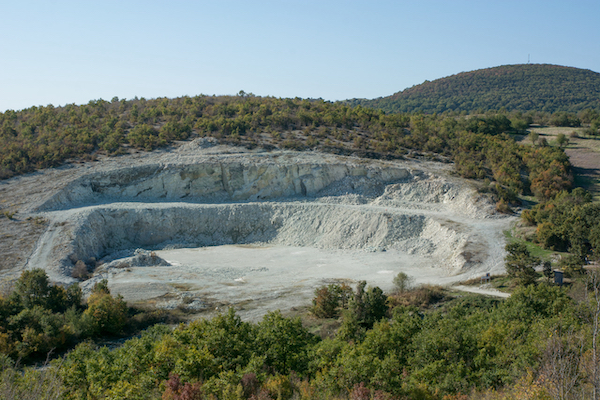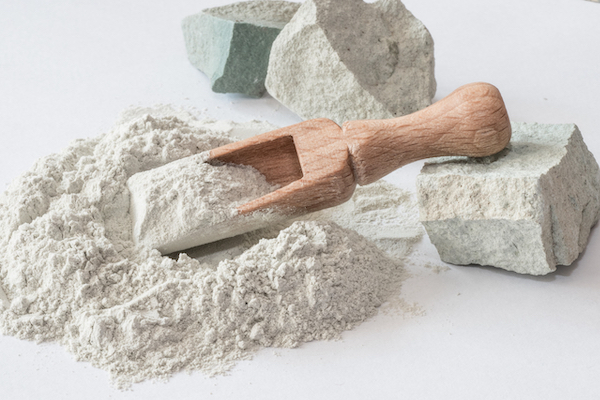What is silicon?
Silicon (Si) is the second most abundant element on our planet after oxygen. Oxygen is without question absolutely essential for life and is rightly called essential. In contrast, the second most common element is still classified as non-essential. How can it be that, according to science and experts, silicon is not supposed to be of great importance in metabolism?
Silicon is a semimetal and thus has properties of metals and non-metals. Silicon does not occur in nature as an element, i.e. in its pure form. It is usually present as a chemical compound of at least two or three elements. Silicon compounds are known as: Zeolite, clinoptilolite, bentonite, montmorillonite, silicon dioxide, silicic acid and silica.
Colloidal Silicon
Colloidal silicon plays a special role, as it is available or can be produced in pure form (usually 99.99% purity). However, a clear distinction must be made between ionic silicon solutions (which, according to the definition, are not colloids) – produced in an electrolysis process (9 to 10,000 volts) – and genuine colloidal silicon, which is present as a colloidal dispersion and is produced, for example, in a high-voltage plasma process with 10,000 volts and a 3,000 to 4,000 degree hot plasma.
Since silicon (like germanium) is an extremely brittle element, only a few people in the world succeed in producing it using the high-voltage plasma process with 10,000 volts. The advantages and positive properties of colloidal silicon in contrast to ionic silicon solutions are fundamental and very significant in terms of effects in metabolism, reaction energy, bioavailability, benefits, risks and product prices.
Zeolite, Clinoptilolite
In Zeolite, aluminium and silicon atoms are firmly connected to each other by oxygen atoms, which results in an extremely firm and stable lattice structure. Even higher temperatures or stomach acid cannot dissolve this connection, even though reports are repeatedly spread that “aluminium would dissolve from the zeolite and harm the body”. If the aluminium were to dissolve from the structure, the entire framework would collapse and the thousands of years of positive experience with the volcanic rock would vanish into thin air. It is becoming increasingly important to distinguish between facts/experience on the one hand and propaganda/pseudoscience on the other.
Can the classification of silicon as a non-essential element be explained by bio-logic?
It takes a lot of ignorance, arrogance and pseudo-scientific argumentation to communicate this classification as “scientifically proven” and ultimately harm millions of people with it. After more than two years of “corona propaganda” and 70 years of viral mumbo-jumbo, alarm bells should be ringing in every self-thinking person. We should consider taking our health back into our own hands and responsibility. Doctors, therapists, counsellors and “experts” are welcome to give advice – although it should always be clear: “Whose bread I eat, whose song I sing”.
Is silicon a master element?
Master elements are, from our point of view, particularly important elements for our body and metabolism, as they take on a superior role, whether as a structural element or through their function and properties.
For thousands of years, zeolite as clinoptilolite (silicon compound) has had the natural ability to bind toxins and harmful substances throughout the body via its special crystal lattice structure and thus bring them to excretion. Extremely remarkable, but hitherto hardly communicated: Silicon has three other properties that our body uses. And which, in the case of a silicon deficiency, lead to a variety of health disorders and symptoms in the long term.
- Silicon significantly influences the overall stability and structure in the body, regulates the structure formation, elasticity and flexibility of the structure-forming tissues and the vascular system
- Silicon is significantly involved in energy formation and energy conversion through its piezoelectric and photoelectric properties. The heart cells in particular are dependent on a sufficient supply of silicon – the more and the more bioavailable, the better
- Silicon dioxide with its crystal structure can store and release information and oscillation patterns (acts as a transmitter and receiver) and thus functions as a link between the material world and the energetic-informative world



Different zeolites (microporous volcanic rocks) differ in composition and properties due to their geographical mining areas. The common denominator in all of them is that they became what they are now in the course of volcanic eruptions and subsequent contact with water/seawater and the minerals and salts in it: microporous volcanic rock. Microporous means in this context: This rock has many small holes and channels (0.4 to 0.7 nanometres) like a sponge – the more numerous and smaller the holes are, the better zeolite can absorb the “waste” in the body like a sponge, bind it and thus bring it to excretion.
Silicon mirror: What and how does it affect?
- Building material for bones, cartilage, connective tissue with elastin and collagen fibres
- Energy formation of the heart muscle cells and stimulus processing
- Beauty of skin, hair and nails
- Elasticity of tendons and ligaments
- Stabilizes connective tissue, counteracts the development of cellulite
- Energy formation / cell energy metabolism
- Elasticity of the vascular system: vascular walls, arteries, veins, capillaries
- Regulation of immune functions, inflammation
Conclusion so far
Silicon in zeolite rock, silicon dioxide or colloidal silicon is a master element due to its properties and functions. Which mineral/metal could take the place of silicon?
Which silicon compound for which function?
-
Colloidal silicon: Immediately bioavailable silicon with particle sizes of 1 to 20 nm for silicon metabolism and as a catalyst for elementary metabolic processes
-
Zeolite powder: For binding and eliminating harmful substances, for ion exchange (to supply minerals to the body) and for the supply of colloidal silicon dioxide
-
Silicon dioxide: Quantitative element for structure formation, binding and excretion of pollutants (especially aluminium), as an energy transformer (piezo- and photoelectric properties) as well as transmutation of unnatural vibration patterns into natural and constructive vibration patterns (cell and body water, cell communication)
Basics, functions and applications of zeolite:
This video is also available with subtitles as a text version on YouTube.


